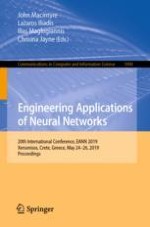2019 | OriginalPaper | Buchkapitel
Convolutional Neural Network for Detection of Building Contours Using Multisource Spatial Data
verfasst von : George Papadopoulos, Nikolaos Vassilas, Anastasios Kesidis
Erschienen in: Engineering Applications of Neural Networks
Aktivieren Sie unsere intelligente Suche, um passende Fachinhalte oder Patente zu finden.
Wählen Sie Textabschnitte aus um mit Künstlicher Intelligenz passenden Patente zu finden. powered by
Markieren Sie Textabschnitte, um KI-gestützt weitere passende Inhalte zu finden. powered by
